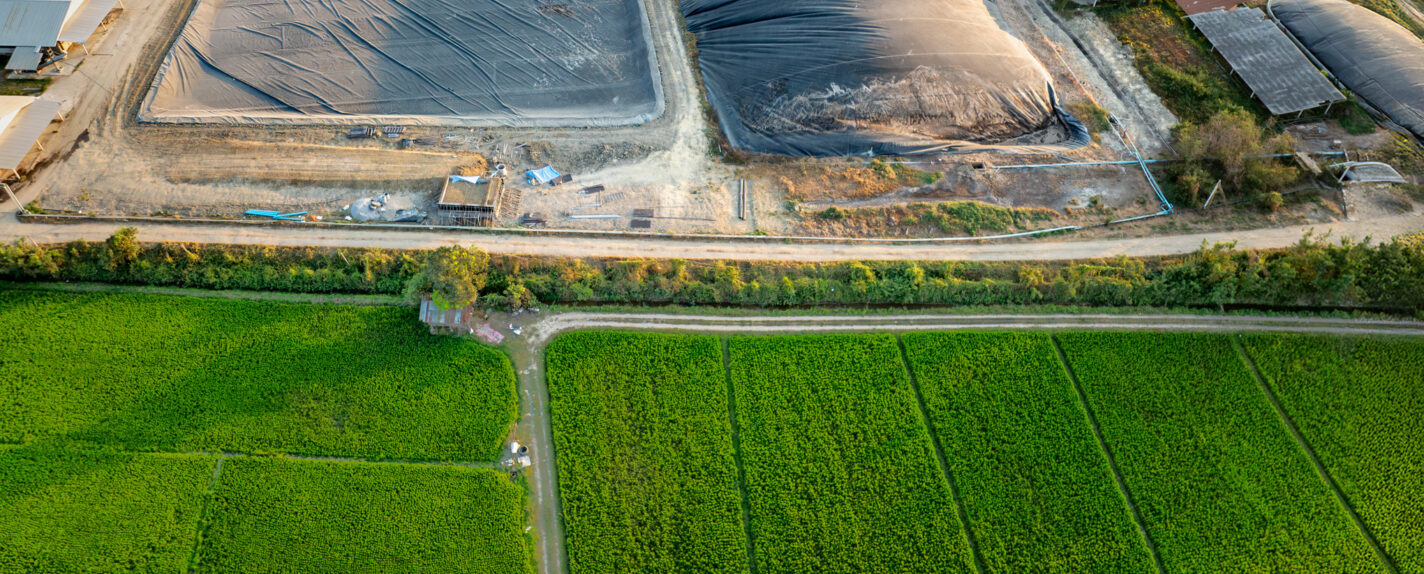EPA, States Signal Interest in Regulating PFAS in Biosolids

Newsletter Articles, PFAS
A number of states and the outgoing Biden Administration have begun to regulate, or consider regulating, PFAS in sewage sludge (also known as biosolids). This week, EPA released a draft risk assessment finding that exposure to PFOS and PFOA in biosolids may pose human health risks in certain circumstances.[1] While the draft assessment is neither a regulation nor formal guidance, if the agency concludes in its forthcoming final assessment that risks exceed acceptable thresholds, it “expects to propose a regulation under [Clean Water Act] section 405 to manage PFOA and/or PFOS in sewage sludge.”[2] Comments on the draft risk assessment are due by March 17, 2025.[3]
Several states are also acting, often in a bipartisan fashion, to add to a patchwork of existing state laws on the subject.[4] If passed, Texas House Bill 1674, introduced on December 19, 2024,[5] would establish PFAS limits for sewage sludge intended for use as a fertilizer, soil amendment, topsoil replacement, or other similar agricultural purpose; implement mandatory monthly and “per batch” testing requirements; mandate disposal of noncompliant batches at a hazardous waste landfill or incinerator; and make intentionally or knowingly selling or distributing noncompliant batches a Class A misdemeanor.[6] A bill pre-filed in Washington state on December 13, 2024 would require the state’s Department of Ecology to establish PFAS testing requirements for biosolids, analyze the results, and submit a report to the legislature with a recommendation on how to proceed based on the analysis.[7] In Oklahoma, a bill introduced in the senate on January 2, 2025 would ban land application of sewage sludge generated from municipal, commercial and industrial wastewater treatment plants.[8] A nearly identical bill was introduced in the Mississippi Senate on January 10, 2025.[9]
Background
All wastewater treatment plants that treat domestic sewage generate sewage sludge, which must be managed through treatment and then either reused or disposed of. PFOA and PFOS are found in elevated levels in that sludge nationwide—in areas with and without industrial sources using PFAS—due to the historical and ongoing presence of PFAS in a range of products.
PFAS in biosolids are currently regulated through varying state laws[10]—much like the landscape preceding federal regulation of PFAS in drinking water. If EPA issues a final risk assessment similar to the draft, it could lead to federal regulation, and encourage additional state regulation, of PFAS in biosolids. The landscape for biosolids regulations has crossed the political lines often present in other areas of environmental regulation; many states with significant agricultural constituencies are increasingly scrutinizing biosolids due to concerns about the potential impacts of PFAS on soil, water, crops, and livestock.[11]
EPA Risk Assessment Specifics
EPA’s draft sewage sludge risk assessment addressed just two types of PFAS: PFOA and PFOS.[12] The agency concluded that, in certain modeled scenarios for land application, its acceptable human health risk thresholds for those chemicals were exceeded.[13] EPA also found potential human health risks from drinking contaminated groundwater located near a surface disposal site when sewage sludge containing 1 or more parts per billion (“ppb”) of PFOA or four or more ppb of PFOS is “disposed in an unlined or clay-lined surface disposal unit.”[14]
It evaluated potential human health and environmental risks associated with three categories of use and disposal practices for PFOA- and PFOS-contaminated sewage sludge: land application, surface disposal, and incineration.[15] The assessment did not model risks for the general public, but instead focused on individuals in high exposure scenarios.[16] Specifically: (1) land application on a farm growing fruits and vegetables (“Crop Farm Scenario”); (2) land application on a farm raising livestock (“Pasture Farm Scenario”); (3) surface disposal at a dedicated surface disposal site (“Surface Disposal Scenario”); and (4) land application on overgrazed pasture land (“Land Reclamation Scenario”).[17] EPA did not quantitatively model incineration due to uncertainties around PFOA and PFOS destruction, products of incomplete combustion, and other thermal destruction conditions, but did find possible risks.[18] Landfill disposal of sewage sludge was not evaluated because it is managed under the Resource Conservation and Recovery Act.[19]
Ultimately, EPA found that risks exceeded the agency’s acceptable human health risk thresholds for some Pasture Farm, Crop Farm, Land Reclamation, and Surface Disposal Scenarios.[20] The agency’s risk thresholds for PFOA or PFOS in down-gradient groundwater was not exceeded when surface disposal sites were composite-lined.[21] Those thresholds for PFOA were exceeded, however, in unlined and clay-lined surface disposal sites.[22] EPA found potential threshold exceedances for PFOS at some unlined and clay-lined sites where PFOS concentrations fall between four and 10 ppb.[23] For all Pasture Farm, Crop Farm, Land Reclamation, and Surface Disposal Scenarios, however, EPA assumed PFOA and PFOS concentrations of just one ppb.[24]
EPA’s Conceded Limits to its Assessment and Conclusions
EPA does not expect all farms or surface disposal sites where sewage sludge containing PFOA or PFOS has been applied to pose risks to human health.[25] EPA believes human health risks are lower if: groundwater in the area is protected, application sites are far from surface waters used as a fishing or drinking water source, and when biosolids are applied to grain, fuel, or fiber crops.[26] Nevertheless, the agency contends that the draft risk calculations are not conservative estimates because they: (1) model risks at 1 ppb of PFOA or PFOS, which are “on the low end of measured US sewage sludge concentrations;” (2) reflect median exposure conditions; (3) do not include exposures to PFAS from other items such as consumer products; (4) do not account for the combined risk of PFOA and PFOS; and (5) do not account for exposures from PFOA or PFOS precursors.[27] As EPA’s risk assessment model scales linearly, EPA states that sewage sludge containing 10 ppb PFOA or PFOS would yield ten times greater risk estimates.[28] EPA cited a 2022 nationwide study of biosolids that found PFOA concentrations ranging from 0.8-8.12 ppb and PFOS concentrations ranging from 0.386-150 ppb, meaning actual risks may be higher.[29]
Other State Action to Regulate PFAS in Biosolids
Maine and Connecticut have taken the most restrictive approaches to regulating PFAS in biosolids. In 2022, Maine became the first (and so far only) state to ban the land application of all biosolids outright.[30] In 2024, Connecticut banned the sale and use of PFAS-containing biosolids and wastewater sludge as a soil amendment, which will likely prove to be a de facto ban on land application practices.[31]
At present, no federal standards govern PFAS in biosolids. Publicly owned treatment works must variously comply with state reporting laws, bans, or permit conditions; and fertilizer companies utilizing biosolids and other entities have been sued by farmers as well as environmental and consumer health advocacy groups.[32] Both scientific understanding and the legal landscape will continue to develop around the issue of PFAS in biosolids, particularly in the context of land application.
Contact Jessica Ferrell or Kameron Schroeder with questions regarding EPA’s Draft Risk Assessment for PFAS in biosolids, or potential health, regulatory and liability risks due to PFAS in biosolids.
[1] For a variety of perspectives, see, e.g., H. Tabuchi, In a First, the E.P.A. Warns of ‘Forever Chemicals’ in Sludge Fertilizer, New York Times (Jan. 14, 2025); NACWA, PFAS and Biosolids (Jan. 16, 2025); B. Moran, EPA Finds Possible Health Risks Associated with PFAS in Sewage Sludge, WBUR (Jan. 16, 2025); C. Jaynes, PFAS ‘Forever Chemicals’ Used on Farms Could Significantly Raise Health Risks, EPA Draft Guidelines Warn, EcoWatch (Jan. 14, 2025).
[2] EPA, Draft Sewage Sludge Risk Assessment for Perfluorooctanoic Acid (PFOA) and Perfluorooctane Sulfonic Acid (PFOS), 90 Fed. Reg. 3859, 3863 (Jan. 15, 2025) (“Publication Notice”); see also EPA, Frequent Questions and Answers: Draft Sewage Sludge Risk Assessment for PFOA and PFOS(Jan. 16, 2025).
[3] Publication Notice, supra n.2, 90 Fed. Reg. at 3859.
[4] See E. Lautanen, J. Kray & J. Tupper, Wastewater, Biosolids Come Under PFAS Regulation, Marten Law (Sept. 10, 2024) (listing state actions additional to bills described above).
[5] H.B. 1674, 89th Leg., Reg. Sess. (Tex. 2024).
[6] Id.
[7] “An Act Relating to Sampling or Testing of Biosolids for PFAS Chemicals,” S.B. 5033, 69th Leg., Reg. Sess. (Wash. 2024).
[8] S.B. 268, 2025 Leg., 60th Sess. (Okla. 2025).
[9] “Mississippi Act to Prohibit the Contamination of Clean Soils with So-called Forever Chemicals,” S.B. 2004, 60th Leg., 1st Sess. (Miss. 2025).
[10] See E. Lautanen, et al., supra n.4.
[11] See generally H. Tabuchi, supra n.1; H. Tabuchi, What to Know About ‘Forever Chemicals’ in Sludge Fertilizer, New York Times (Jan. 14, 2025); H. Tabuchi, Something’s Poisoning America’s Land. Farmers Fear ‘Forever’ Chemicals. New York Times (Aug. 31, 2025); H. Tabuchi, Their Fertilizer Poisons Farmland. Now, They Want Protection From Lawsuits. New York Times (Dec. 6, 2024).
[12] EPA, Draft Sewage Sludge Risk Assessment for Perfluorooctanoic Acid (PFOA) CASRN 335-67-1 and Perfluorooctane Sulfonic Acid (PFOS) CASRN 1763-23-1 (Jan. 14, 2025).
[13] Id. at v.
[14] Id.
[15] Id. at iv.
[16] Id. at 24.
[17] Id.
[18] Id. at 34.
[19] Id.
[20] Id. at v.
[21] Id. at 110.
[22] Id.
[23] Id.
[24] Id. at 102.
[25] Id. at v.
[26] Id.
[27] Id. at vi.
[28] Id. at vii.
[29] Id. at 12 (citing C. E. Schaefer, J. Hooper, M. Modiri-Gharehveran, D.M. Drennan, N. Beecher, & L. Lee, Release of poly- and perfluoroalkyl substances from finished biosolids in soil mesocosms, 217 Water Rsch. 118405 (2022).
[30] 38 MRSA § 1306 (7)(A)(2).
[31] “An Act Concerning the Use of PFAS in Certain Products,” S.B. 292, Gen. Assem. (2024). For additional state actions, see E. Lautanen, et al., supra n.4.
[32] See E. Lautanen, et al., supra n.4.
Newsletter Articles, PFAS
Authors
Related Services and Industries
Authors
Related Services and Industries
Stay Informed
Sign up for our law and policy newsletter to receive email alerts and in-depth articles on recent developments and cutting-edge debates within our core practice areas.
